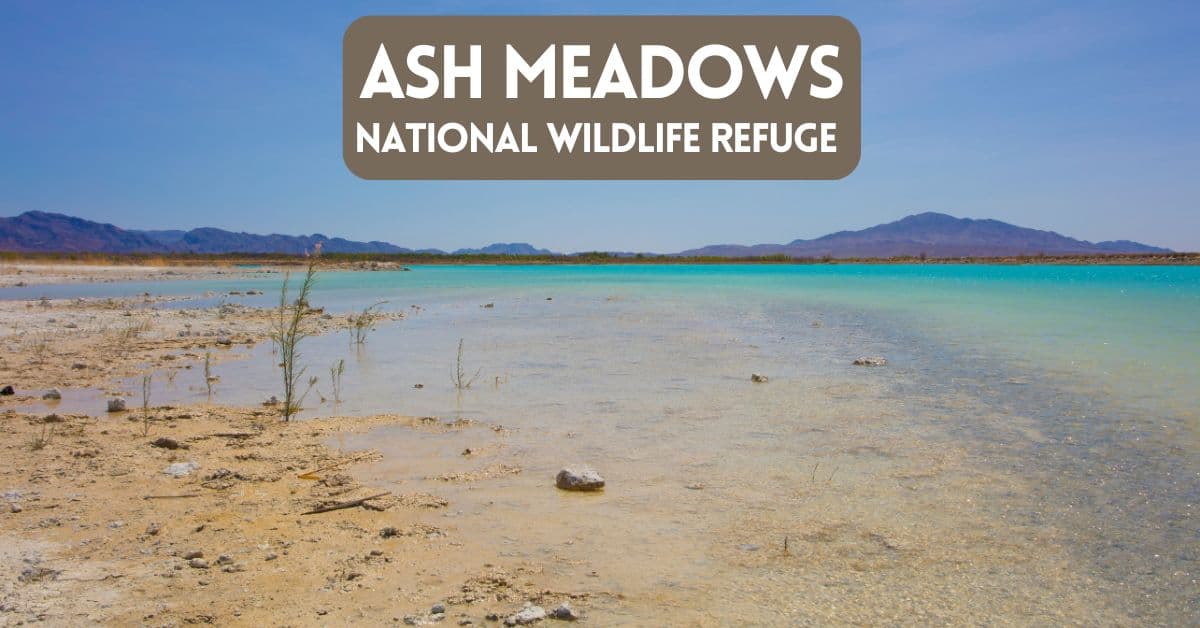Ash Meadows National Wildlife Refuge – Desert Beauty
Nestled in the Mojave Desert of southern Nevada, Ash Meadows National Wildlife Refuge is a hidden gem for nature enthusiasts and wildlife lovers. We visited this pristine oasis, renowned for its crystal-clear springs and lush wetlands. The refuge offers a stark contrast to the surrounding arid landscape. Home to an array of rare and endangered species, including the famous pupfish, Ash Meadows is a haven for biodiversity and a site of significant cultural and geological history.
The Refuge is home to the magnificent desert pup fish, crystal springs, and a cabin that was once the hideout of Jack Longstreet.
In this blog post, we’ll explore the unique features of Ash Meadows, from its vibrant ecosystems to the serene beauty that makes it a must-visit destination for tourists visiting the broader Death Valley National Park area.
The Places Where We Go contains affiliate links and is a member of the Amazon Services LLC Associates Program. As an Amazon Associate, we earn from qualifying purchases at no extra cost to you when you purchase using one of these Amazon links. Read our disclaimer and privacy policy for more information.
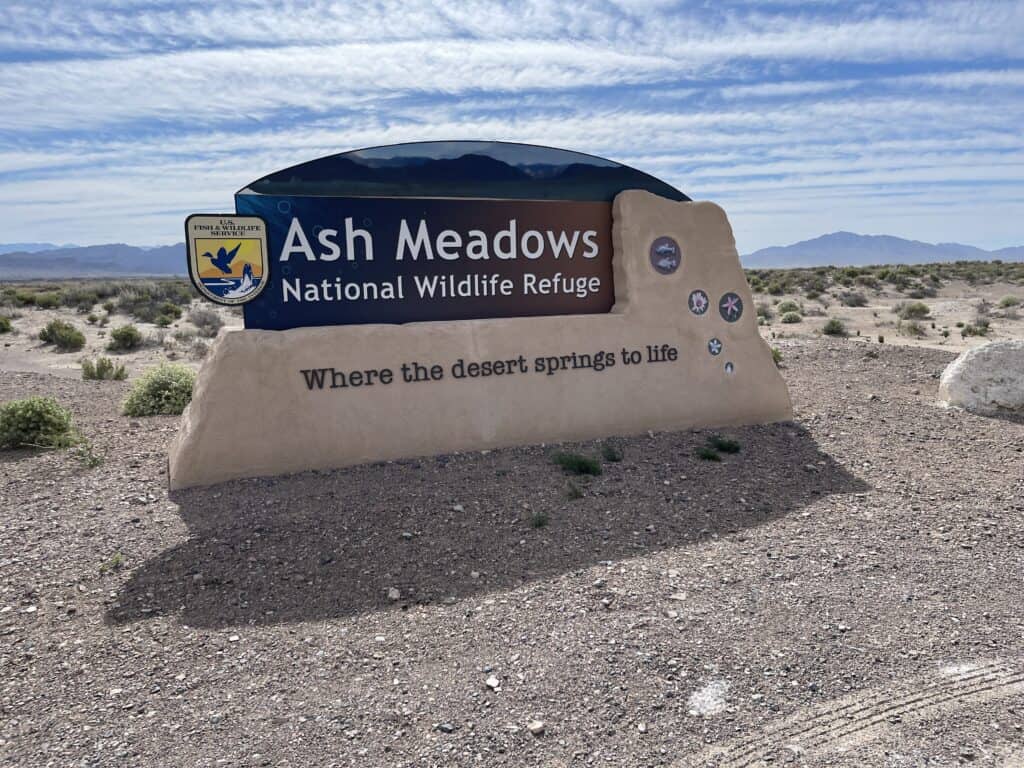
Introduction to Ash Meadows National Wildlife Refuge
Located in the Mojave Desert, Ash Meadows National Wildlife Refuge is a unique and diverse ecosystem that is home to over 26 endemic species. These species can only be found in this area and nowhere else in the world. It’s a prime example of conservation efforts and showcases the importance of protecting our natural habitats.
This hidden gem is a must-visit for nature lovers and outdoor enthusiasts alike. You can spend several hours exploring the refuge through various hiking trails, each offering a different perspective of the landscape and its inhabitants. You might even spot rare species such as the Devils Hole pupfish, Ash Meadows speckled dace, and Amargosa toad.
Where is Ash Meadows National Wildlife Refuge?
Ash Meadows National Wildlife Refuge is located in the Amargosa Valley of southern Nevada, United States. It is approximately 90 miles northwest of Las Vegas and 25 miles west of Pahrump. The refuge is within the larger Mojave Desert region and covers an area of over 23,000 acres. For visitors to Death Valley National Park, Ash Meadows is found a short drive from the National Park’s east entrance.
The main entrance to Ash Meadows is off Highway 373, just south of the town of Crystal. From there, visitors can explore the refuge through a network of roads and trails.
The coordinates for Ash Meadows National Wildlife Refuge are Latitude: 36°30’19.9″N Longitude: 116°16’26.7″W, and it is situated at an elevation of 2649 feet above sea level.
Highlights At Ash Meadows National Wildlife Refuge
Ash Meadows National Wildlife Refuge – Visitor Center
We highly recommend visiting the visitor center before heading out on your hike to learn more about the refuge’s history, conservation efforts, and tips for spotting wildlife. The knowledgeable staff and volunteers are passionate about the refuge and are happy to share their insight with visitors.
It’s worth stopping inside to get guidance on how to spend your time at the refuge. The exhibits inside provide excellent information about the area and help inform your visit.
We spoke to the rangers, who gave us a map and highlighted a few locations to explore.
Also, if you have a National Park Passport book, you can get a stamp inside the visitor center.
Crystal Boardwalk
Just through the back doors of the visitor center, you’ll find the Crystal Boardwalk. This is where you’ll want to start your exploration of the refuge.
The Crystal Boardwalk at Ash Meadows National Wildlife Refuge is a breathtaking raised walkway that winds through a peaceful and stunning desert landscape.
It’s a great introduction to the area. It’s just a short 0.9-mile loop walk with a stop at the Crystal Spring at its apex. Along the walk, you’ll see crystal-clear pools of water, towering cattails, and bright green reeds.
The boardwalk also provides an up-close view of unique plant species, such as the quillwort, which is only found in this area. It’s a peaceful and serene experience that is a nice start for exploring Ash Meadows.
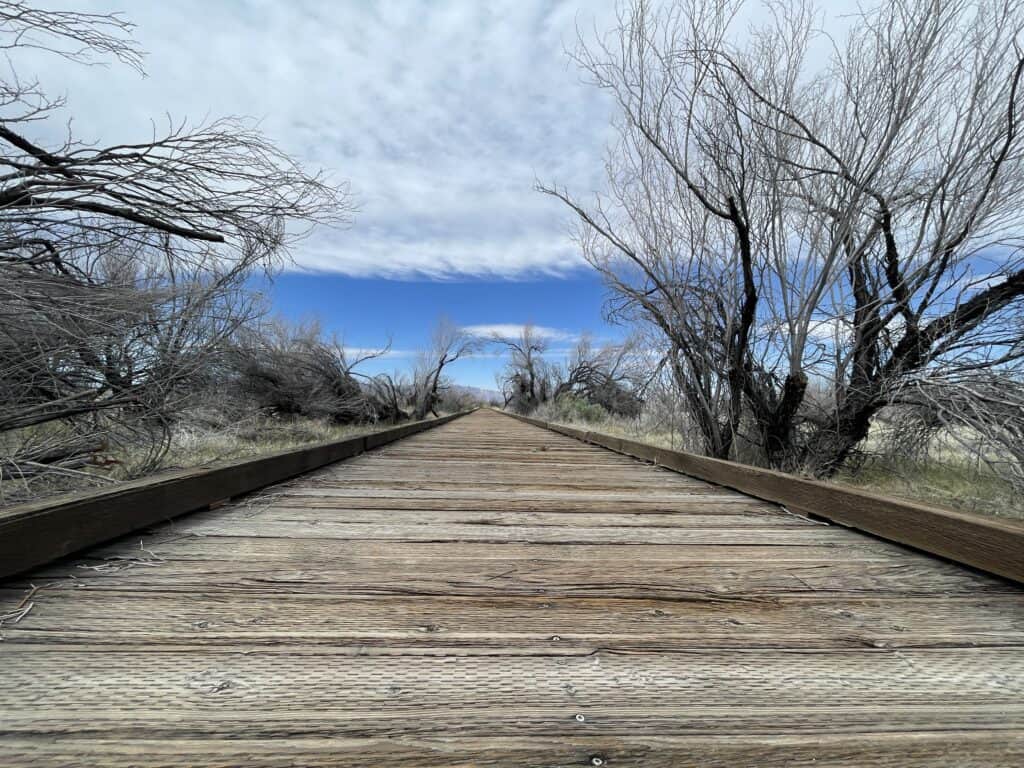
Devil’s Hole
We should mention that the refuge is a large area. And while there are numerous places to explore, you’ll travel in your car from one location to another.
Our next stop at the refuge was Devil’s Hole. Some time ago, we learned about Devil’s Hole on a TV show—we believe it was Rock the Park, plus one or two other YouTube channels we watch. Knowing about this particular location was a main draw for our visit to Ash Meadows.
This deep, water-filled limestone cavern is home to one of the rarest species on Earth – the Devils Hole pupfish.
This small, bright blue fish can only be found in this specific location and nowhere else in the world. The pupfish has survived in this isolated environment for thousands of years, making it a living relic and a testament to the resilience of nature.
Scientists estimate that the Devils Hole pupfish have been isolated for 10,000 to 20,000 years, longer than any other species in the Death Valley system. In 1967, the Devils Hole pupfish were officially designated an endangered species.
The connection between Devil’s Hole and Death Valley National Park is strong, as this underground aquifer that feeds the cavern extends all the way into Death Valley. Devil’s Hole was added to Death Valley National Monument in 1952. Eventually, the hole was fenced off after two divers drowned in its waters.
Visitors to Devil’s Hole can experience a unique educational opportunity. From a fenced viewing platform, they can learn about the pupfish’s history and the ongoing conservation efforts. However, due to the viewing distance from the water, it’s unlikely to spot pupfish at this location, even with binoculars.
Devil’s Hole is not just a unique natural wonder, but also an unusual indicator of seismic activity around the world. Acting as a sort of seismograph, large earthquakes from as far away as Asia and South America have caused the water to ‘slosh’ in Devils Hole like water in a bathtub. After such global seismic events, waves in Devils Hole may splash as high as two meters up the walls, impacting the shallow shelf so important to the pupfish.
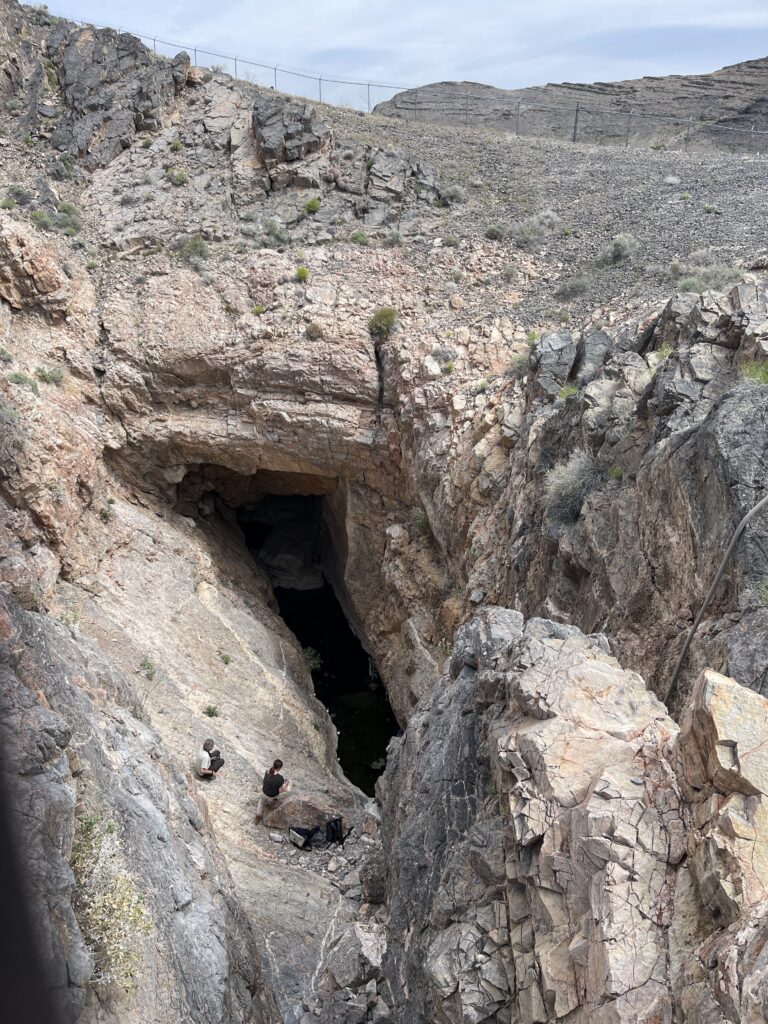
Point of Rocks Boardwalk
Our next destination in Ash Meadows was the Point of Rocks Boardwalk. This unique boardwalk offers a different perspective of the refuge and is a pleasant walk on a short 0.7-mile loop.
This boardwalk offers a different perspective of the refuge, with views of the vibrant green marshes and crystal clear pools home to the unique pupfish. It’s also a great spot for birdwatching, with over 300 species of migratory birds passing through Ash Meadows each year.
As we walked along the boardwalk, we were amazed by the diversity and beauty of the landscape. This walk culminates at an overlook called the amphitheater.
The highlight was stopping at a spring, where we saw quite a number of blue pupfish. We were amazed at the number of little blue fish visible in the spring. We found a place to sit and relax and enjoyed watching these rare aquatic wonders.
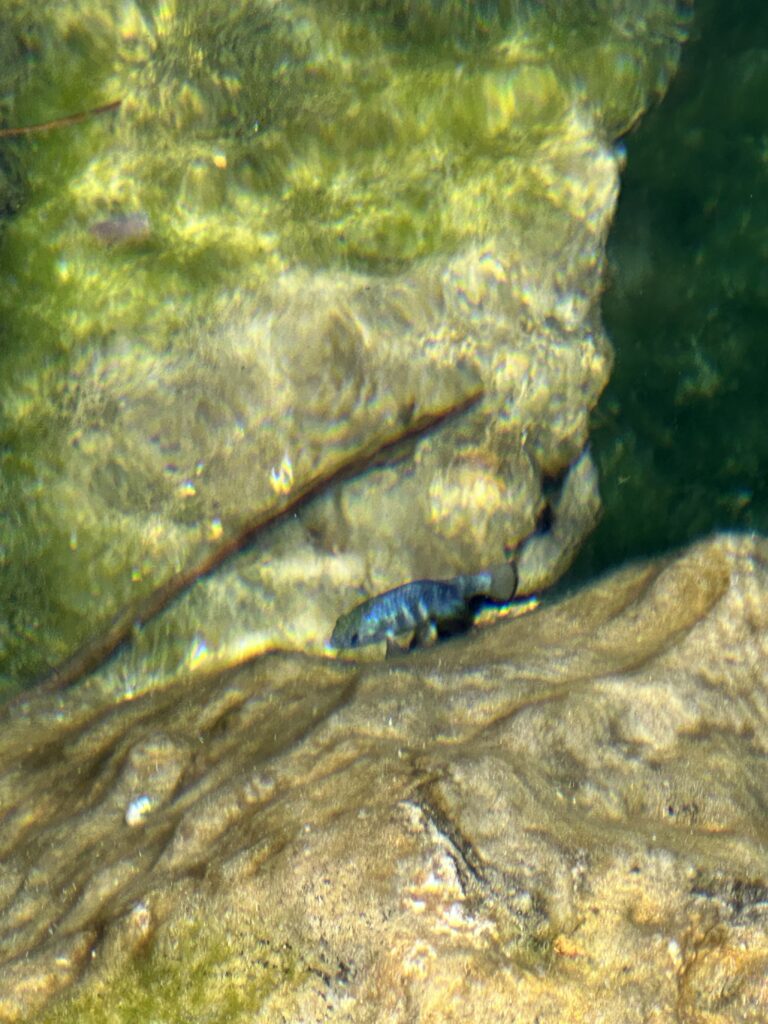
Longstreet Spring and Cabin
Our final stop at Ash Meadows was to visit the Longstreet Spring and Cabin. To reach the cabin, you must travel down a dirt road for some distance. We drove here in our Ford F250 truck, so we didn’t experience any problems with the drive.
The sign near the cabin reads, “It was said at one time that every white man in Ash Meadows was ‘on the dodge from something’.”
And this is where Andrew Jackson Longstreet made his home for a while. Longstreet made notches in his gun for every man he killed – and with five notches on this weapon, he claimed only to regret one.
He built his cabin here at Ash Meadows to hide from posse fellows, and stones were piled high along one side to help keep it hidden from view.
Longstreet homesteaded this area from 1899 until 1907. He was in his fifties when he built the cabin. When he sold the cabin and another nearby property along with their water rights, he got $30,000 for the exchange – a small fortune for that time. With cash in hand, things worked out well for him as Nevada banks failed in the panic of 1907.
The spring adjacent to the cabin provides water for the wildlife in the refuge. We were able to get up close and personal with the crystal-clear water.
The cabin you visit today is not the original structure. In 1984, a flash flood reduced the original cabin to rubble. But given the history connected here, historians worked to rebuild the cabin – referencing photos to put every stone in the proper position. The restoration was completed in 2006.
The cabin is open for visitors to explore, providing a glimpse into what life was like in this remote desert area over a century ago. It’s a fascinating piece of history that adds another layer to the diverse landscape and experiences at Ash Meadows.
After spending some time at Longstreet Spring and Cabin, we got in the car and drove out of the refuge back to our Airstream at the Longstreet Inn and Casino RV Park.
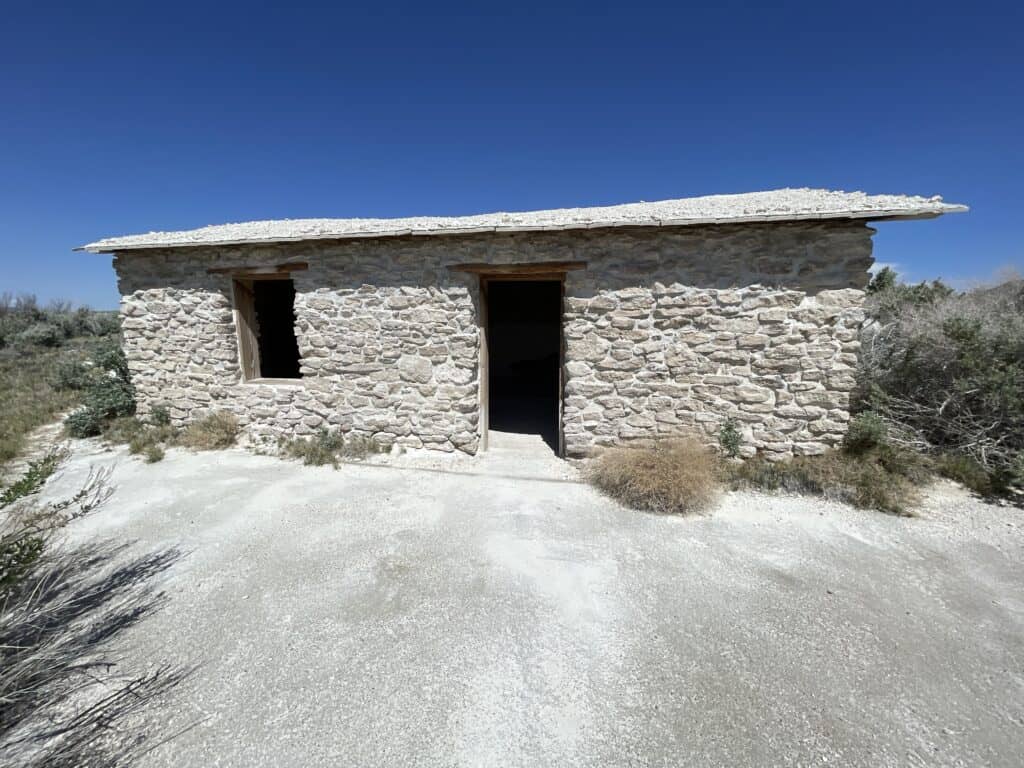
Tips For Visiting Ash Meadows National Wildlife Refuge
- Wear comfortable walking shoes, especially if you venture out on any dirt trails
- Bring plenty of water, especially if visiting during the hot summer months.
- Pack a lunch – there are no restaurants here
- Bring binoculars and keep an eye out for wildlife – you never know what unique creatures you may spot!
- Respect all signs and regulations, including staying on designated paths and not disturbing any natural habitats.
- Be mindful of the fragile ecosystem and pack out any trash or waste.
- Consider visiting during the spring when wildflowers are in bloom for a stunning display of color.
- Take your time to fully explore and appreciate all that Ash Meadows has to offer – from the marshes and pupfish, to the desert landscape and historical sites.
- Come prepared with sunscreen, hats, and other sun protection, as the refuge is located in a high desert environment with intense sun exposure.
- Check the visitor center for any special events or guided tours happening during your visit.
- Take time to read the interpretive panels scattered around the refuge. They provide great information about different aspects of the refuge, from its geological formations to its diverse wildlife.
Places To Stay Near Ash Meadows National Wildlife Refuge
Learn About Ash Meadows Before Your Visit
Watch Our Ash Meadows YouTube Episode
Listen to our Ash Meadows National Wildlife Refuge Podcast
In episode 116, we travel east of Death Valley National Park to Nevada’s Amargosa Valley. This episode recaps our visit to the Ash Meadows National Wildlife Refuge. Listen below, or find the episode in your favorite podcast app for listening while walking or driving in your car.
Conclusion
As we conclude our journey through Ash Meadows National Wildlife Refuge, it’s clear that this extraordinary destination offers a wealth of experiences for visitors. From the educational insights and welcoming atmosphere at the Ash Meadows Visitors Center to the mysterious allure of Devil’s Hole, every corner of the refuge tells a unique story. The serene walk along the Point of Rocks Boardwalk immerses you in the beauty of the wetlands, while the historic Longstreet Cabin provides a glimpse into the region’s past.
Whether you’re a nature enthusiast, history buff, or simply seeking tranquility, Ash Meadows promises an unforgettable adventure, reminding us of the delicate balance between preserving our natural treasures and enjoying their splendor.
Thanks for reading this post. We hope to see you at the places where we go.
Julie & Art
Explore More Places Near Ash Meadows
One Day Death Valley Itinerary

